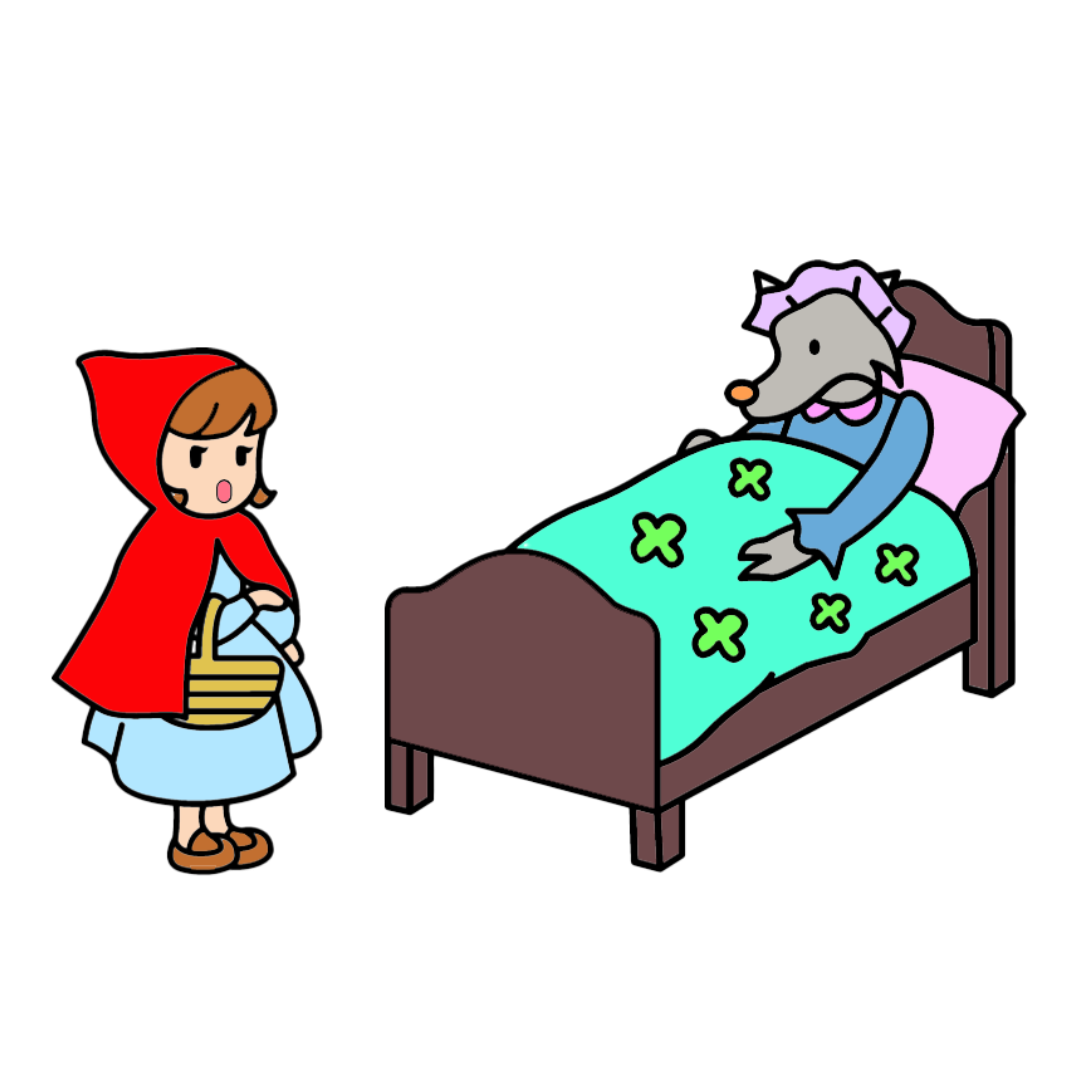Read paragraph 1.
"Once her grandmother gave her a red cape with a hood. It looked so well on her that the little girl wore it all the time, and she therefore came to be known as Little Red Riding Hood."Read Paragraph 2.
"One day her mother said to her, 'Go, my dear, to your grandmother with these cakes and soup. She was not feeling well when I last visited her. On the way, do not speak to strangers and do not leave the path, or you might fall or even lose your way.' "Read paragraph 3.
"Her grandmother lived in the woods, around half an hour's walk from the village."Read paragraphs 8 and 9.
"The wolf said, 'The woods are very beautiful at this time of the year, with a lot of flowers blossoming. Why don't you go and take a look?' ""She thought to herself, 'I'll take a bouquet of these flowers to Grandma.' As she gathered flowers, she saw more beautiful flowers ahead and so she wandered further and further into the woods."
Read paragraph 3.
"On her way, Little Red Riding Hood met a wolf, who would very much like to eat her."Read paragraph 13.
A. Adjectives of opinion tell readers about how the writer thinks of the nouns, e.g. a cute kitten.
B. Adjectives of size tell readers about how large or small someone or something is, e.g. a little puppy.
C. Adjectives of age tell readers about how young or old someone is, e.g. an aged woman.
D. Adjectives of colour tell readers about the colour of something, e.g. a yellow bag.
Read the order of adjectives again carefully. Which type of adjective comes first?
Read paragraph 15.
"Little Red Riding Hood promised Grandma and later her mother never to go off the path and talk to strangers again."
Little Red Riding Hood
Score Sheet
| Questions | Results |
|---|---|
| Question 1 | |
| Question 2 | |
| Question 3 | |
| Question 4 | |
| Question 5 | |
| Question 6 | |
| Question 7a | |
| Question 7b | |
| Question 7c | |
| Question 7d | |
| Question 8 | |
| Question 9 | |
| Total |
Extension: Time to think!
10. What is the moral lesson of the story?
11. Who looks after you at home? What adjectives would you use to describe him or her? Think of two or three suitable adjectives to describe this important person, then share your feelings with him or her.
